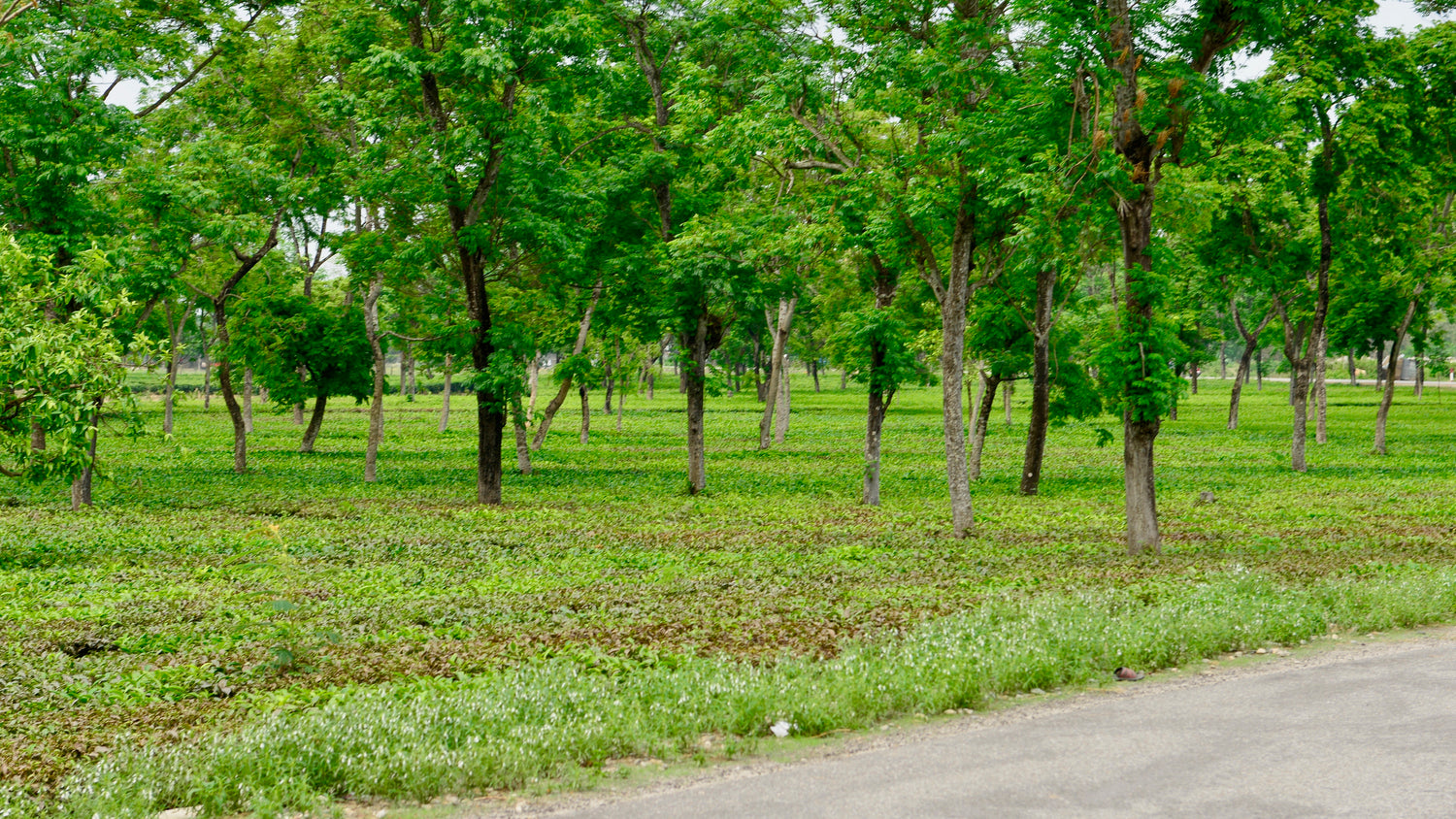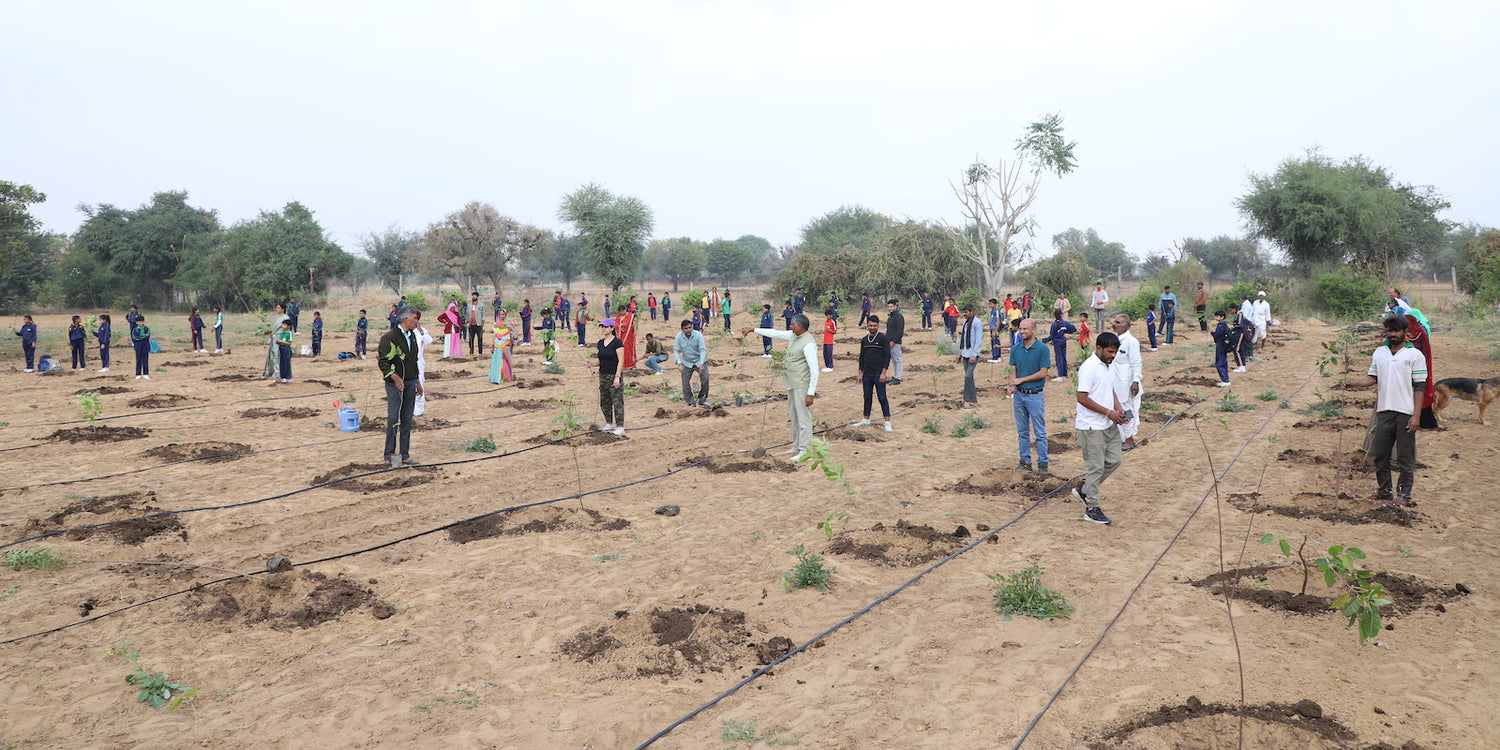Agroforestry in Karnataka: Boosting Agriculture with Greener Ecosystem
Karnataka, a state rich in biodiversity and agricultural heritage, is an ideal landscape for agroforestry—a sustainable practice that integrates trees Read more
Connect with us
-
👥 Corporates
If you are looking for:
- 🌲 Tree Plantation Events
- 📊 CSR Projects
📧 corporate@growbilliontrees.com
📞 +91 9699723523
💬 +91 9325931304 WhatsApp (Only)
🕒 Mon - Sat | 10am - 7pm IST
-
🧩 Tree Plantation NGOs
If you are looking for:
- 💰 Financial Assistance
- 🤝 Operational Support
📧 support@growbilliontrees.com
📞 +91 9699723523
💬 +91 9325931304 WhatsApp (Only)
🕒 Mon - Sat | 10am - 7pm IST
-
🌼 Individuals
If you are looking for:
- 👥 Group Tree Plantation Drive
- 🌳 Bulk Tree Plantation
📞 +91 9699723523
💬 +91 9325931304 WhatsApp (Only)
🕒 Mon - Sat | 10am - 7pm IST
Trending
Trees for Corporates
Agroforestry in Karnataka: Boosting Agriculture with Greener Ecosystems
Karnataka, a state rich in biodiversity and agricultural heritage, is an ideal landscape for agroforestry—a sustainable practice that integrates trees with crops and livestock.
With its diverse geography, ranging from the lush Western Ghats to the semi-arid plains, Karnataka offers immense potential for agroforestry to enhance farmer livelihoods, combat climate change, and restore degraded ecosystems.
Agroforestry in Karnataka is transforming farming practices, ensuring a greener and more resilient future.
Historical Context of Agroforestry in Karnataka
Agroforestry has deep roots in Karnataka’s agricultural history. Traditional farming communities often planted trees like Neem (Azadirachta indica) and Tamarind (Tamarindus indica) alongside crops to provide shade, fodder, and medicinal benefits.
Ancient texts from the Hoysala and Vijayanagara empires mention the integration of trees in agricultural landscapes, reflecting how agroforestry was part of sustainable land-use practices in the region.
The Need for Agroforestry in Karnataka
1. Addressing Land Degradation
Over 50% of Karnataka’s agricultural land is affected by soil erosion and degradation. Agroforestry systems improve soil fertility, reduce erosion, and restore productivity.
2. Enhancing Farmer Incomes
With a predominantly agrarian economy, Karnataka’s farmers benefit from agroforestry’s diverse income streams, including timber, fruits, and non-timber forest products like honey and resin.
3. Improving Climate Resilience
Karnataka faces erratic rainfall and frequent droughts, particularly in regions like North Karnataka. Agroforestry buffers against climate variability, ensuring more stable agricultural outputs.
4. Increasing Green Cover
Agroforestry contributes to India’s Green India Mission by increasing tree cover, which is crucial for biodiversity conservation in the Western Ghats and beyond.
Scientific Benefits of Agroforestry
- Soil Health Improvement: Trees like Teak and Eucalyptus improve soil structure and fertility, enhancing crop yields by 20–30%.
- Carbon Sequestration: Agroforestry systems in Karnataka sequester up to 30 tons of carbon dioxide per hectare annually, contributing to climate change mitigation.
- Water Conservation: Tree roots reduce water runoff and increase groundwater recharge, ensuring sustainable water use in semi-arid areas.
Common Agroforestry Practices in Karnataka
1. Silvo-Pastoral Systems
This system combines trees and grasses, providing fodder for livestock while improving soil stability in grazing lands, particularly in regions like Chikkaballapur.
2. Agri-Silviculture
Staple crops like millets, groundnut, and sorghum are grown alongside timber species like Teak and Sheesham, maximizing land productivity.
3. Horti-Silviculture
Fruit trees like Mango, Guava, and Coconut are integrated with timber trees, creating a sustainable source of nutrition and income.
4. Boundary Plantations
Farmers plant trees like Neem and Casuarina along field edges, acting as windbreaks and providing additional income from timber and fodder.
Fun Facts About Agroforestry in Karnataka
- Mango Mania: Karnataka is one of India’s largest mango producers, with agroforestry boosting its cultivation and profitability.
- Teak’s Timeless Value: Teak plantations in agroforestry systems offer high-value timber, making it a long-term investment for farmers.
- Eucalyptus Excellence: Known for its fast growth, Eucalyptus is widely planted in Karnataka’s agroforestry systems for pulp and timber.
Environmental Impact of Agroforestry in Karnataka
1. Combating Desertification
Agroforestry prevents soil erosion and restores degraded lands in arid and semi-arid regions like Bellary and Raichur.
2. Enhancing Biodiversity
Agroforestry systems create habitats for birds, insects, and small mammals, particularly in the Western Ghats, a global biodiversity hotspot.
3. Improving Air Quality
Trees in agroforestry systems act as natural air filters, reducing dust and pollutants in rural and peri-urban areas.
4. Mitigating Urban Heat Islands
Agroforestry in peri-urban areas of Bengaluru and Mysuru reduces temperatures by increasing green cover and enhancing microclimates.
Challenges in Agroforestry Adoption
-
Lack of Awareness Many farmers are unaware of agroforestry’s benefits, limiting its adoption in regions where it could make a significant impact.
-
Market Barriers Farmers often struggle to access markets for timber and non-timber products, affecting the profitability of agroforestry systems.
-
Policy Hurdles Complex regulations around tree felling and timber trade discourage farmers from planting high-value tree species.
-
Climate Risks Unpredictable weather patterns and droughts pose challenges to maintaining agroforestry systems in vulnerable areas.
Grow Billion Trees: Revolutionizing Agroforestry in Karnataka
Grow Billion Trees is transforming Karnataka’s agricultural landscape through innovative agroforestry projects that prioritize sustainability, farmer welfare, and environmental conservation.
Collaborations
- Partnering with the Karnataka Forest Department and local NGOs to implement large-scale agroforestry projects.
- Collaborating with research institutions to develop agroforestry models tailored to Karnataka’s diverse climates and soil types.
Execution Strategies
- Tree Nurseries: Establishing nurseries to supply high-quality saplings of native and commercially valuable tree species like Teak, Eucalyptus, and Mango.
- Farmer Training Programs: Conducting workshops and demonstrations to educate farmers on agroforestry practices and their ecological and economic benefits.
- Market Linkages: Connecting farmers with timber industries and markets for non-timber products, ensuring fair pricing and steady demand.
Awareness and Advocacy
- Running campaigns to promote agroforestry’s role in combating climate change and boosting rural incomes.
- Sharing success stories of farmers who have transformed their lands with agroforestry, inspiring others to adopt the practice.
Key Achievements by Grow Billion Trees
- Tree Plantation Drives: Over 7 million trees planted across Karnataka, increasing green cover and restoring degraded lands.
- Farmer Empowerment: Enabled over 20,000 farmers to adopt agroforestry, improving their incomes by up to 40%.
- Carbon Sequestration: Agroforestry projects in Karnataka under Grow Billion Trees have sequestered over 1.2 million tons of carbon dioxide.
Future Prospects
By 2030, agroforestry in Karnataka has the potential to:
- Increase the state’s green cover by 15%, supporting India’s environmental goals.
- Restore 1 million hectares of degraded land, enhancing agricultural productivity and biodiversity.
- Provide additional income to over 50,000 farming households, ensuring economic stability in rural communities.
Conclusion
Agroforestry in Karnataka is more than just a farming practice; it is a transformative approach that integrates sustainability, profitability, and environmental conservation.
From combating desertification in the arid north to enhancing biodiversity in the lush Western Ghats, agroforestry is paving the way for a greener, more resilient Karnataka.
Grow Billion Trees is at the forefront of this revolution, empowering farmers, restoring ecosystems, and building a sustainable future. Together, these efforts ensure that Karnataka’s agricultural and environmental heritage thrives for generations to come.
Teak Agroforestry in Karnataka
Teak trees offer high-value timber, making them a farmer’s long-term investment while enhancing soil and creating greener farmlands across Karnataka.
Mango-Based Agroforestry
Mango trees bring sweet profits and sustainable farming practices, thriving alongside crops in Karnataka’s tropical and semi-arid regions.
Eucalyptus in Karnataka Agroforestry
Fast-growing and versatile, Eucalyptus is a favorite for timber and pulp, boosting farmer incomes in Karnataka’s agroforestry systems.
Silvo-Pastoral Systems in Karnataka
This blend of trees and grasses supports livestock while stabilizing soils in Karnataka’s grazing lands and semi-arid zones.
Horti-Silviculture Systems in Karnataka
Combining fruit trees like guava and coconut with timber species, this system balances nutrition and income for Karnataka farmers.
Neem in Agroforestry
Neem, known for its medicinal and pest-repelling properties, thrives in Karnataka’s climate, enriching soils and protecting crops.
Boundary Plantations in Karnataka
Farmers plant trees like Casuarina and Bamboo along field edges, acting as natural fences, windbreaks, and additional income sources.
Carbon Sequestration in Karnataka Agroforestry
Agroforestry systems trap tons of carbon, turning Karnataka’s farmlands into unsung heroes in the fight against climate change.
Agroforestry for Soil Health in Karnataka
Tree roots improve soil structure and fertility, making degraded lands productive again for Karnataka’s farmers.
Grow Billion Trees in Karnataka
Empowering farmers with saplings, training, and market access, Grow Billion Trees ensures agroforestry transforms Karnataka’s landscapes.
Agroforestry and Water Conservation in Karnataka
Tree roots reduce runoff and recharge groundwater, ensuring water availability for farming in Karnataka’s semi-arid regions.
Biodiversity in Karnataka Agroforestry
These systems support birds, insects, and mammals, making Karnataka’s farms vibrant ecosystems while boosting productivity.
You may like
Corporate Plantations
FAQ
What is agroforestry in Karnataka?
Agroforestry integrates trees with crops and livestock to boost farmer incomes and restore ecosystems. Grow Billion Trees promotes this sustainable practice to create greener, more resilient farmlands in Karnataka.
Why is agroforestry important in Karnataka?
It combats land degradation, diversifies farmer incomes, and enhances biodiversity. Grow Billion Trees ensures agroforestry benefits both rural communities and the environment.
How does agroforestry combat desertification in Karnataka?
Trees stabilize soil, reduce erosion, and restore productivity in degraded lands. Grow Billion Trees partners with farmers to turn arid regions into thriving ecosystems.
Which trees are popular in Karnataka’s agroforestry systems?
Teak, Mango, and Eucalyptus are farmer favorites, offering timber, fruits, and fast growth. Grow Billion Trees provides high-quality saplings for these valuable species.
How does agroforestry improve biodiversity in Karnataka?
Agroforestry farms create habitats for birds, pollinators, and wildlife, transforming farms into biodiversity hotspots. Grow Billion Trees supports designs that balance farming with conservation.
Can agroforestry help Karnataka’s water conservation efforts?
Yes, tree roots reduce runoff and recharge groundwater, ensuring sustainable water use. Grow Billion Trees promotes agroforestry systems that address Karnataka’s water challenges.
What is the role of silvo-pastoral systems in Karnataka?
These systems combine trees and grasses to support livestock while improving soil stability. Grow Billion Trees encourages silvo-pastoral systems for sustainable grazing.
How does agroforestry support Karnataka’s farmers financially?
Farmers earn dual incomes from crops and timber, along with additional benefits like fodder and non-timber products. Grow Billion Trees provides market linkages for better returns.
What challenges do Karnataka farmers face in adopting agroforestry?
Lack of awareness, policy barriers, and market access are common hurdles. Grow Billion Trees bridges these gaps with training, resources, and advocacy.
How does agroforestry contribute to Karnataka’s climate goals?
Agroforestry systems sequester carbon and reduce greenhouse gases, helping Karnataka combat climate change. Grow Billion Trees scales up projects to maximize these benefits.
Can small farmers adopt agroforestry in Karnataka?
Absolutely! Small farmers benefit from diversified income and improved land use. Grow Billion Trees provides tools, saplings, and training to make agroforestry accessible for all.
How does Grow Billion Trees promote agroforestry in Karnataka?
We plant trees, train farmers, and build market linkages, ensuring agroforestry thrives as a sustainable model in Karnataka’s diverse landscapes.























